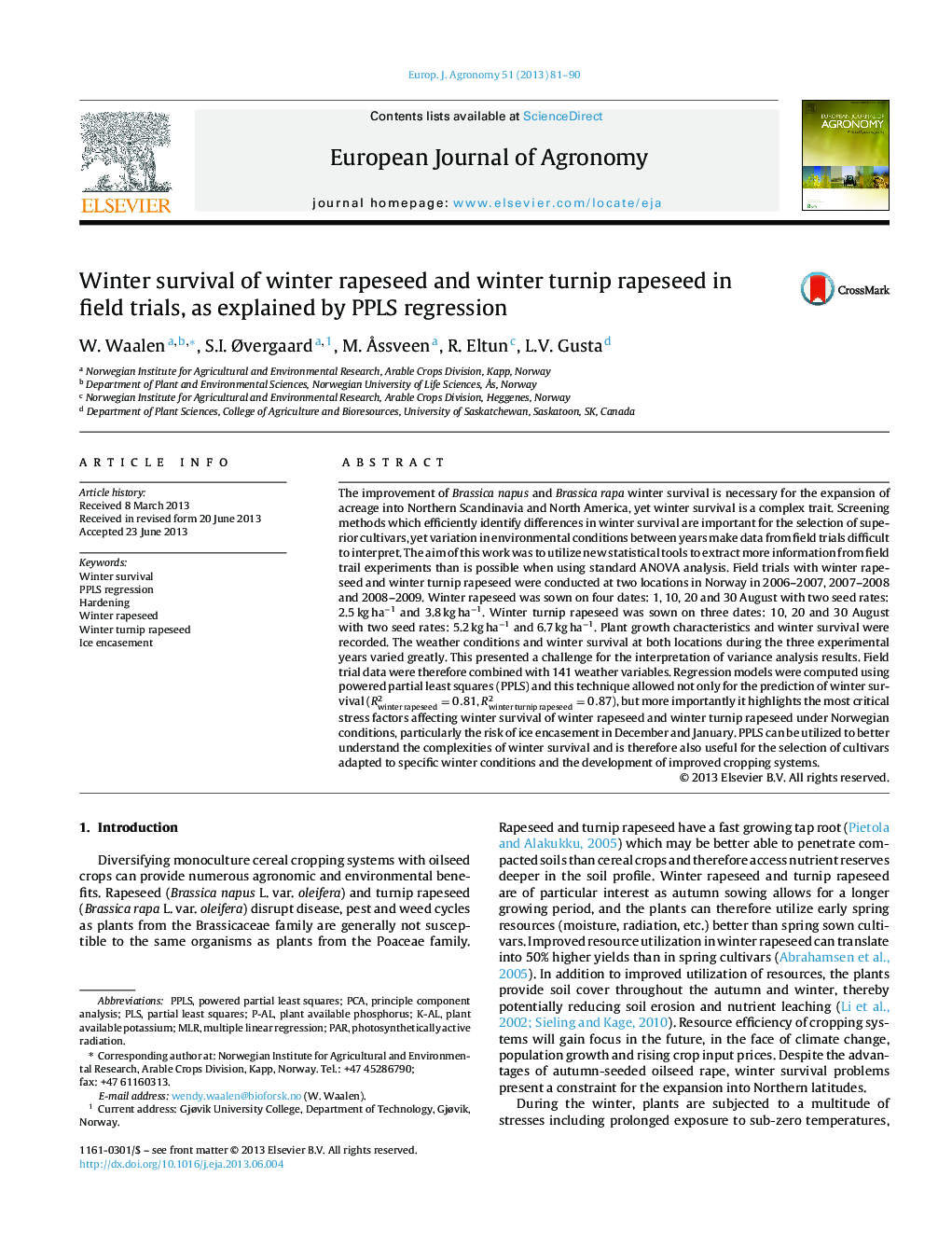| Article ID | Journal | Published Year | Pages | File Type |
|---|---|---|---|---|
| 4508961 | European Journal of Agronomy | 2013 | 10 Pages |
•Field trial data of winter oilseed rape were combined with 141 weather variables.•PPLS regression allowed for the prediction of winter survival with few variables.•Critical stress factors for winter survival of winter oilseed rape were identified.•Improved ice encasement tolerance is key to winter survival improvement in Norway.•PPLS can be utilized to better understand the complexities of winter survival.
The improvement of Brassica napus and Brassica rapa winter survival is necessary for the expansion of acreage into Northern Scandinavia and North America, yet winter survival is a complex trait. Screening methods which efficiently identify differences in winter survival are important for the selection of superior cultivars, yet variation in environmental conditions between years make data from field trials difficult to interpret. The aim of this work was to utilize new statistical tools to extract more information from field trail experiments than is possible when using standard ANOVA analysis. Field trials with winter rapeseed and winter turnip rapeseed were conducted at two locations in Norway in 2006–2007, 2007–2008 and 2008–2009. Winter rapeseed was sown on four dates: 1, 10, 20 and 30 August with two seed rates: 2.5 kg ha−1 and 3.8 kg ha−1. Winter turnip rapeseed was sown on three dates: 10, 20 and 30 August with two seed rates: 5.2 kg ha−1 and 6.7 kg ha−1. Plant growth characteristics and winter survival were recorded. The weather conditions and winter survival at both locations during the three experimental years varied greatly. This presented a challenge for the interpretation of variance analysis results. Field trial data were therefore combined with 141 weather variables. Regression models were computed using powered partial least squares (PPLS) and this technique allowed not only for the prediction of winter survival (Rwinter rapeseed2=0.81, Rwinter turnip rapeseed2=0.87), but more importantly it highlights the most critical stress factors affecting winter survival of winter rapeseed and winter turnip rapeseed under Norwegian conditions, particularly the risk of ice encasement in December and January. PPLS can be utilized to better understand the complexities of winter survival and is therefore also useful for the selection of cultivars adapted to specific winter conditions and the development of improved cropping systems.
